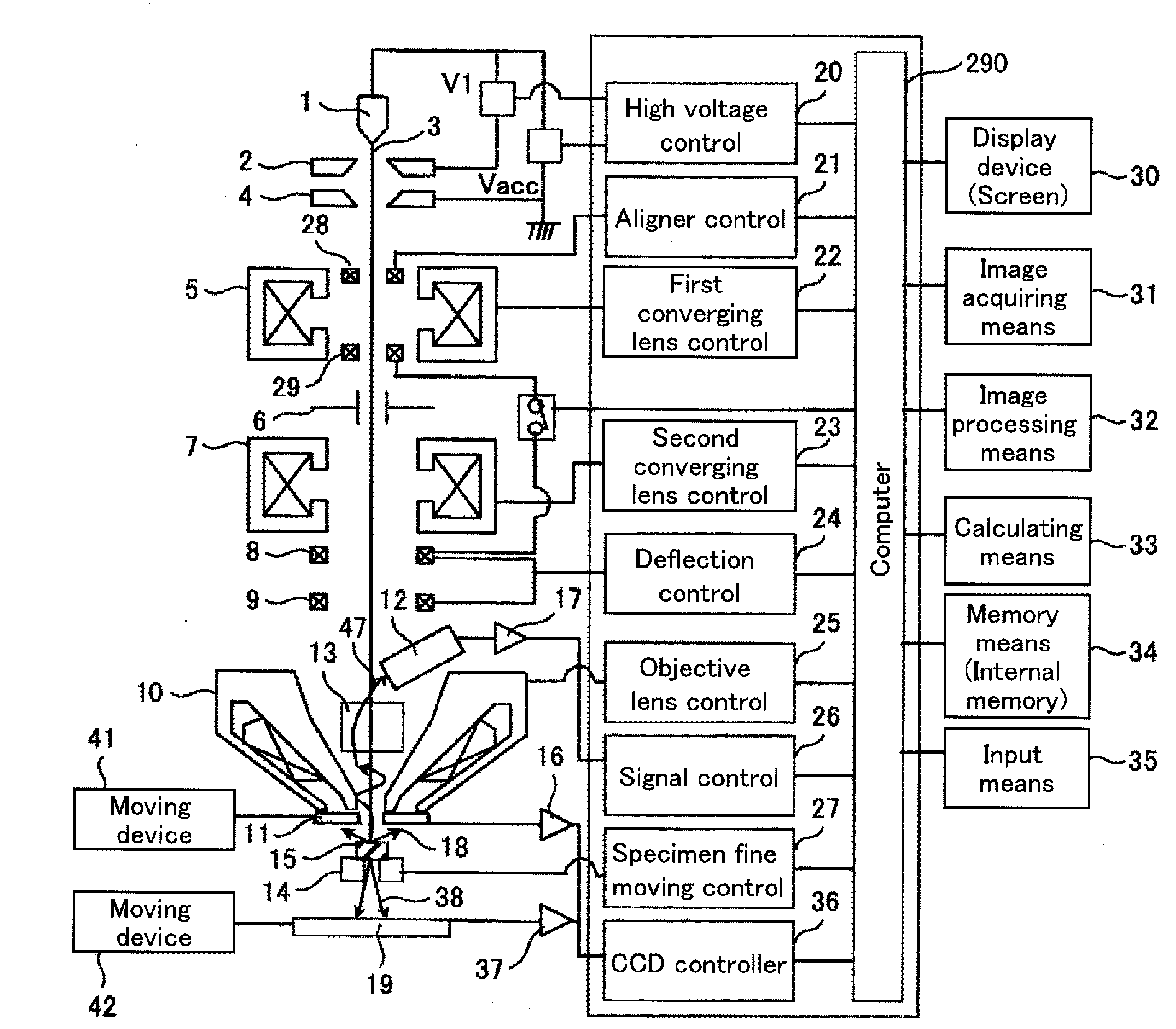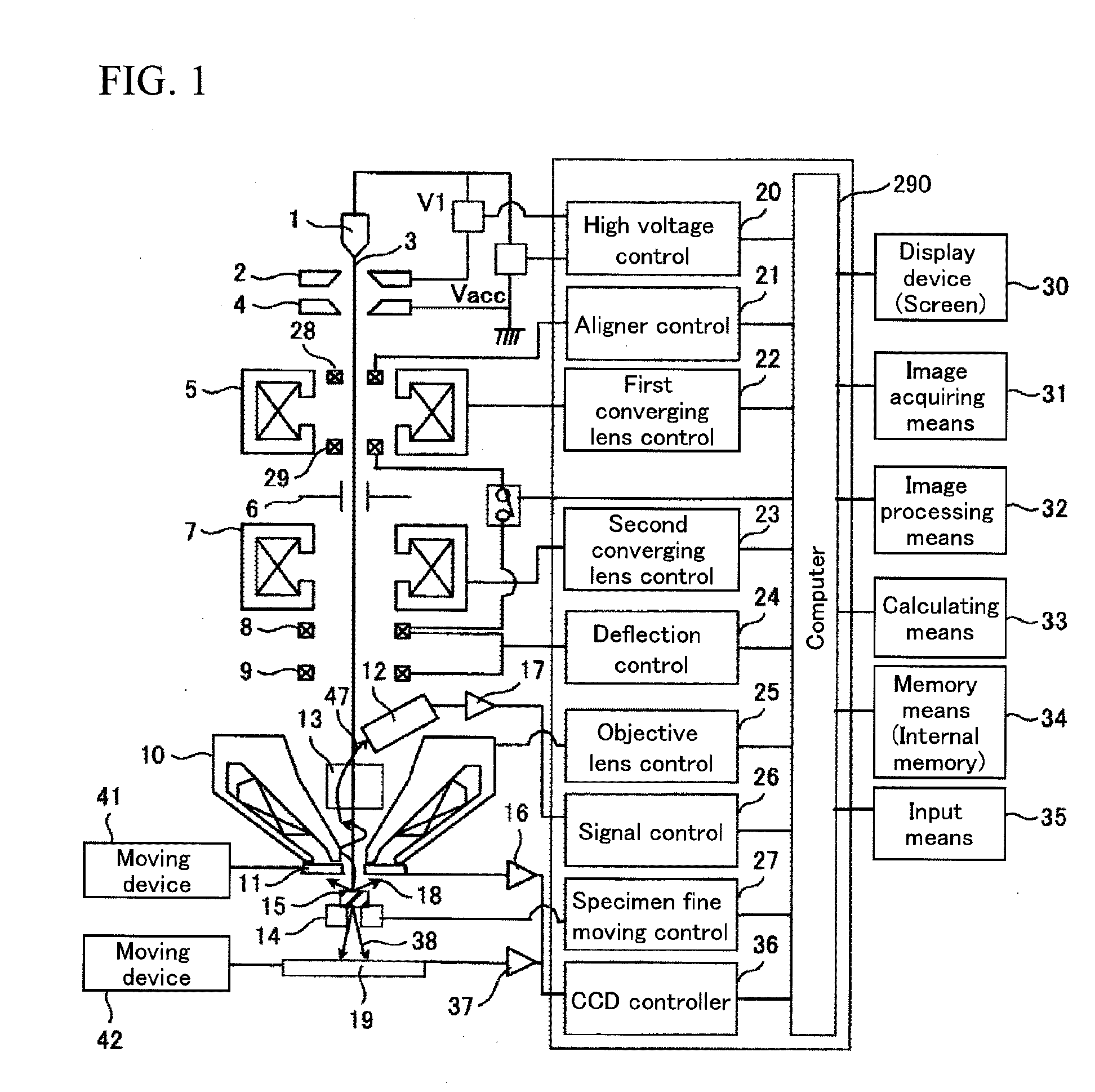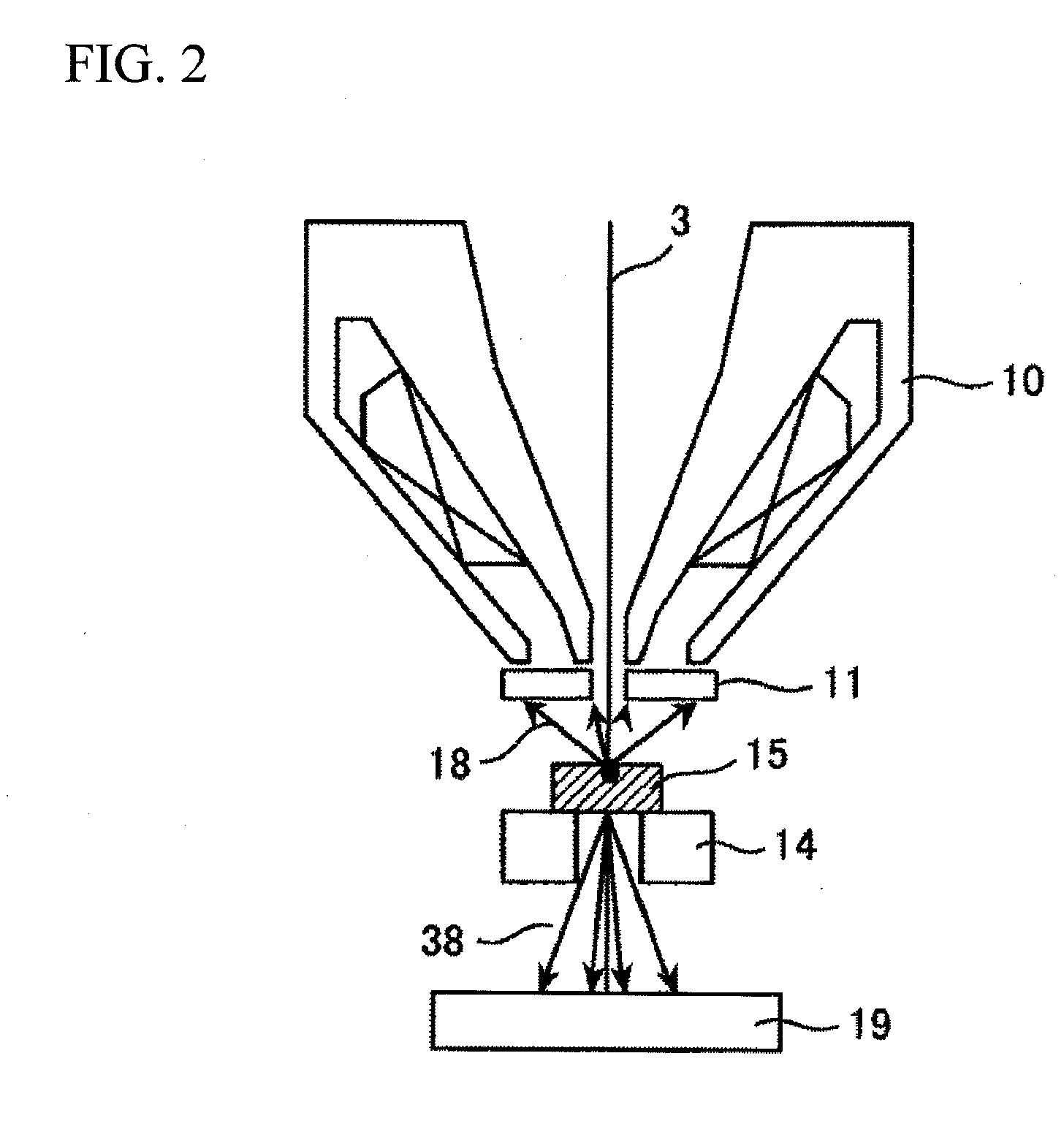Electron microscopy
a technology of electron microscopy and electron microscopy, which is applied in the field of electron microscopy, can solve the problems of not offering sufficient discrimination and no longer meeting the needs of analysis, and achieve the effect of improving the degree of operation
- Summary
- Abstract
- Description
- Claims
- Application Information
AI Technical Summary
Benefits of technology
Problems solved by technology
Method used
Image
Examples
Embodiment Construction
[0028]Hereinafter, with reference to the drawings, an embodiment of the present invention will be described in detail.
[0029]FIG. 1 is a schematic diagram of the embodiment of the present invention.
[0030]A primary electron beam 3 is discharged from a cathode 1 by a voltage V1 applied to the cathode 1 and a first electrode 2, and is accelerated by a voltage Vacc applied to a second electrode 4 to advance to an electromagnetic lens system at a rear stage.
[0031]The acceleration voltage Vacc and the V1 are controlled by a high voltage control circuit 20. The primary electron beam 3 is converged by a first converging lens 5 controlled by a first converging lens control circuit 22. Here, the specimen irradiation current of the primary electron beam 3 is restricted by an objective lens aperture 6. In order for the center of the electron beam to pass through a hole center of the objective lens aperture 6, an electron-beam center-axis adjustment aligner 28, an aligner control circuit 21, and ...
PUM
 Login to View More
Login to View More Abstract
Description
Claims
Application Information
 Login to View More
Login to View More - R&D
- Intellectual Property
- Life Sciences
- Materials
- Tech Scout
- Unparalleled Data Quality
- Higher Quality Content
- 60% Fewer Hallucinations
Browse by: Latest US Patents, China's latest patents, Technical Efficacy Thesaurus, Application Domain, Technology Topic, Popular Technical Reports.
© 2025 PatSnap. All rights reserved.Legal|Privacy policy|Modern Slavery Act Transparency Statement|Sitemap|About US| Contact US: help@patsnap.com



